A dozen schools in the region offer the sport, and the WIAA is sanctioning the game for the first time since 2002.
CAMAS — High school slowpitch softball had its time in Clark County, in Washington, but then it faded away.
The game was around for years, many years ago, even sanctioned by the Washington Interscholastic Activities Association (WIAA).
Then it was no longer.
Fastpitch softball became a priority, and that’s just the way it was.
But it did not have to be the way it was going to be in the future.
Someone asked, Why not both?
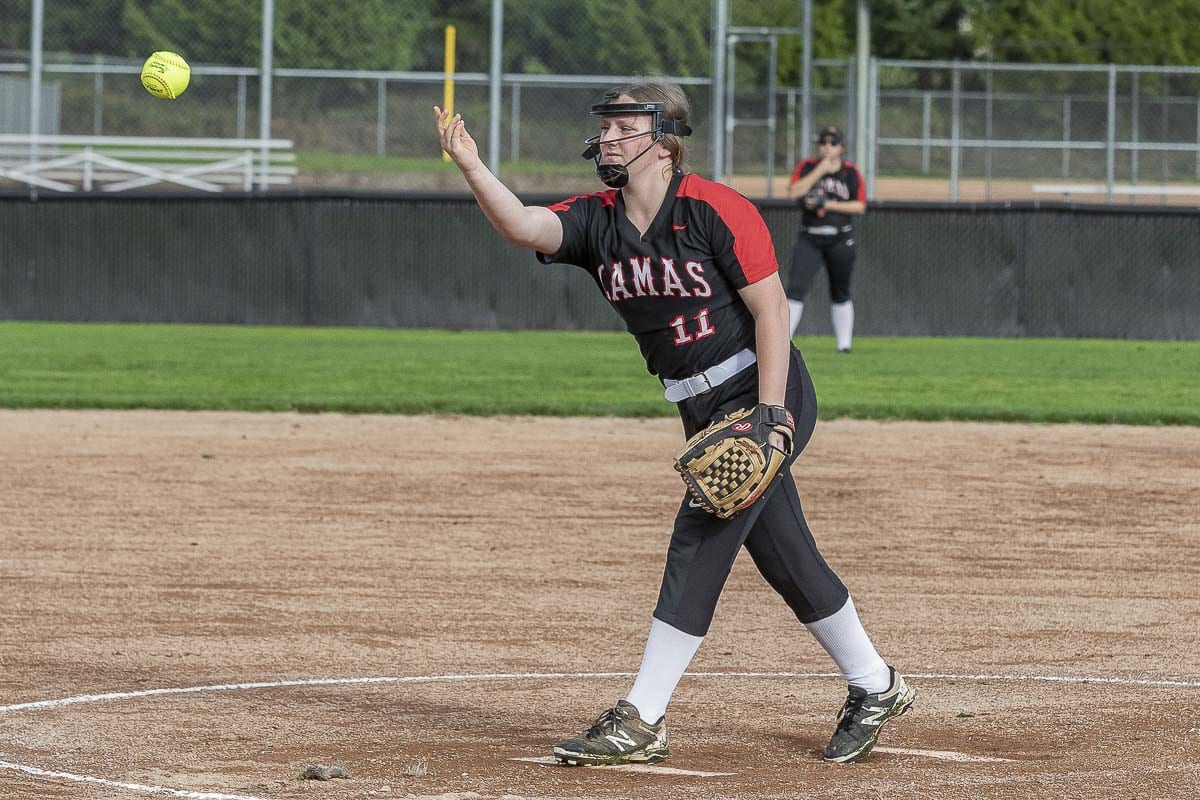
Slowly, slowpitch began a comeback around the state. Schools in eastern Washington went all-in. The rest of the state picked up on that momentum. Played in the fall, not in the spring, more and more Clark County high schools also started fielding slowpitch teams.
A year ago, the WIAA announced it would once again sanction the sport.
And while the sport has had a state tournament in recent years, this fall that tournament will be officially recognized by the WIAA.
Grace Curley of Camas is one of many athletes who are thrilled that the sport is back, that her sport is an option.
“I always wanted to do softball. I thought it looked really fun,” said Curly, now a junior.
She said she always liked baseball, and this was close. However, she had never played any kind of softball growing up; had never been on the field in fastpitch in youth leagues or anything.
As a sophomore, she went out of Camas’ slowpitch squad.
“My coach said, ‘I can’t believe you’ve never played before.’ That’s when I knew I could play. I’m not the best, but I can actually do it,” Curley said. “I’m decent at it.”
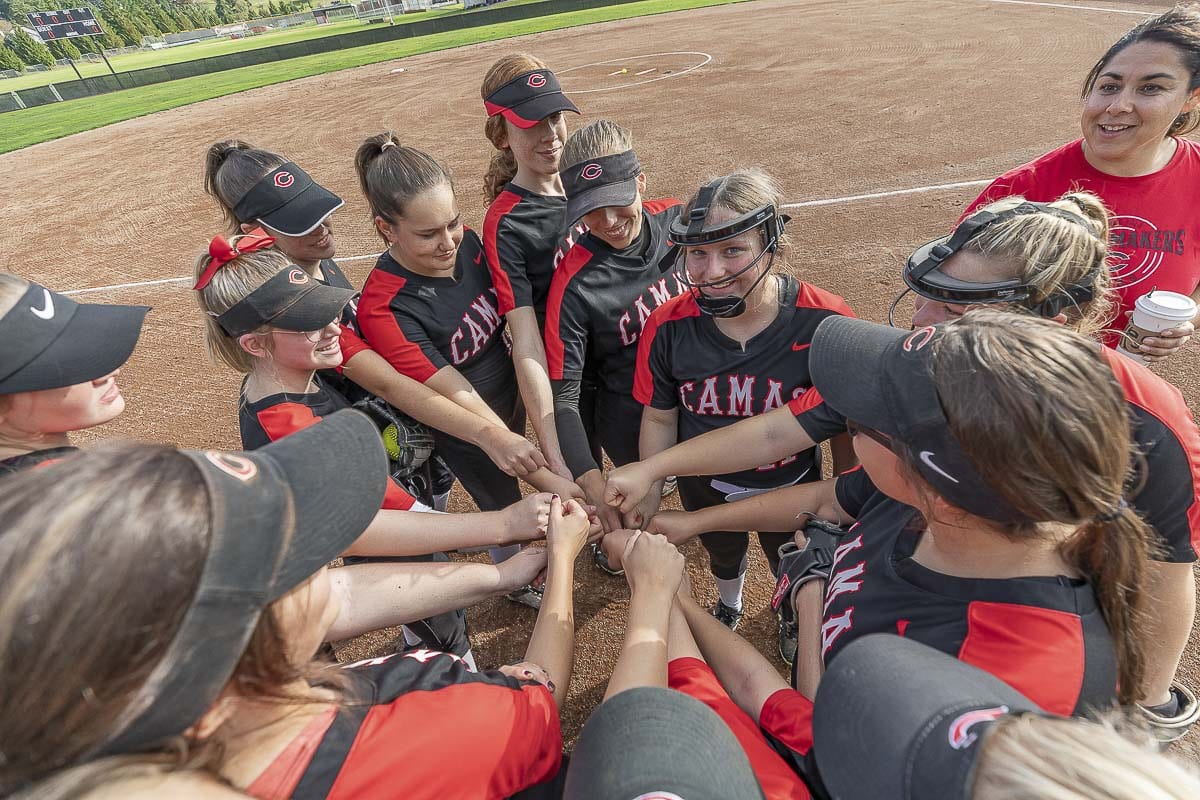
At Camas, roughly half of the players compete in slowpitch in the fall and fastpitch in the spring.
It’s that other half, represented by Curley, that shows how successful this sport has become in this region.
This is the sixth year of slowpitch at Camas, according to Rory Oster, the school’s athletic director. It has been recognized as a varsity sport by the school in all six of those years.
“The draw is to offer another activity for our students to have,” Oster said.
The team has quite a mix of longtime fastpitch athletes with newcomers to the game.
Curley, for example, acknowledged there is no way she could have just come for fastpitch for the first time. She just did not have the experience. With slowpitch, though, a quality athlete can pick up the game in a hurry.
“You see kids who don’t play in the spring who want to be involved in the fall,” Oster said. “We get kids who play slowpitch who don’t play any other sport in our school.”
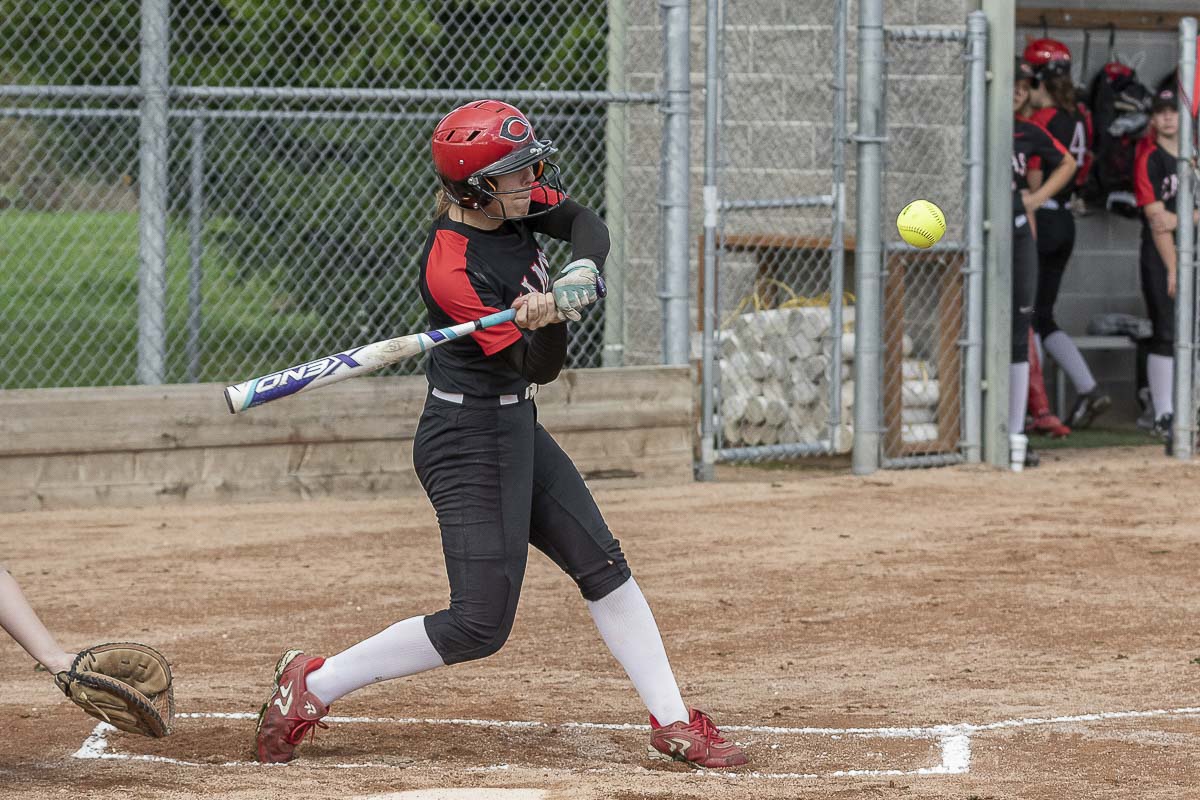
Of course, there also are those who play softball just about all year round. Sophie Franklin was voted the Player of the Year last fall for slowpitch and also shines for the Camas varsity squad. She said she loves both.
What’s her favorite thing about slowpitch?
“I like that it’s a hitter’s paradise,” she said. “You get to hit all day long.”
For outsiders, the game might look less intense. After all, a pitcher is not throwing as hard as she can, throwing riseballs or using other fastpitch strategies to fool a batter. Instead, the pitch goes high in the air, giving the batter plenty of time to prepare to hit.
Inside the diamond, though, there is no laid-back approach from the athletes.
“For me, the intensity is no different,” Franklin said. “It’s still a sport. It’s still something you want to be the best at. You’re still cheering for your teammates. You still want to win.”
Camas coach Mandy Cervantes coaches both the spring and fall teams. There is strategy and scouting in the fall, just like the spring. She uses spray charts to put her players in the right defensive position. She teaches her players that the swing is similar, but it’s all about timing.
The Camas Papermakers must have done something right last year. They represented District 4 at the state tournament.
Clark County programs are not yet up to the competitiveness of the teams from, say, Spokane. Franklin said she heard that when slowpitch returned in that area, the fastpitch players were encouraged to play. Those teams were loaded with experienced hitters and fielders.
“They can turn a double play if you give them a chance,” Franklin said. “It’s insane to watch them.”
Curley said it was cool to be at the state tournament.
“When we were there, we all felt pretty special,” she said.
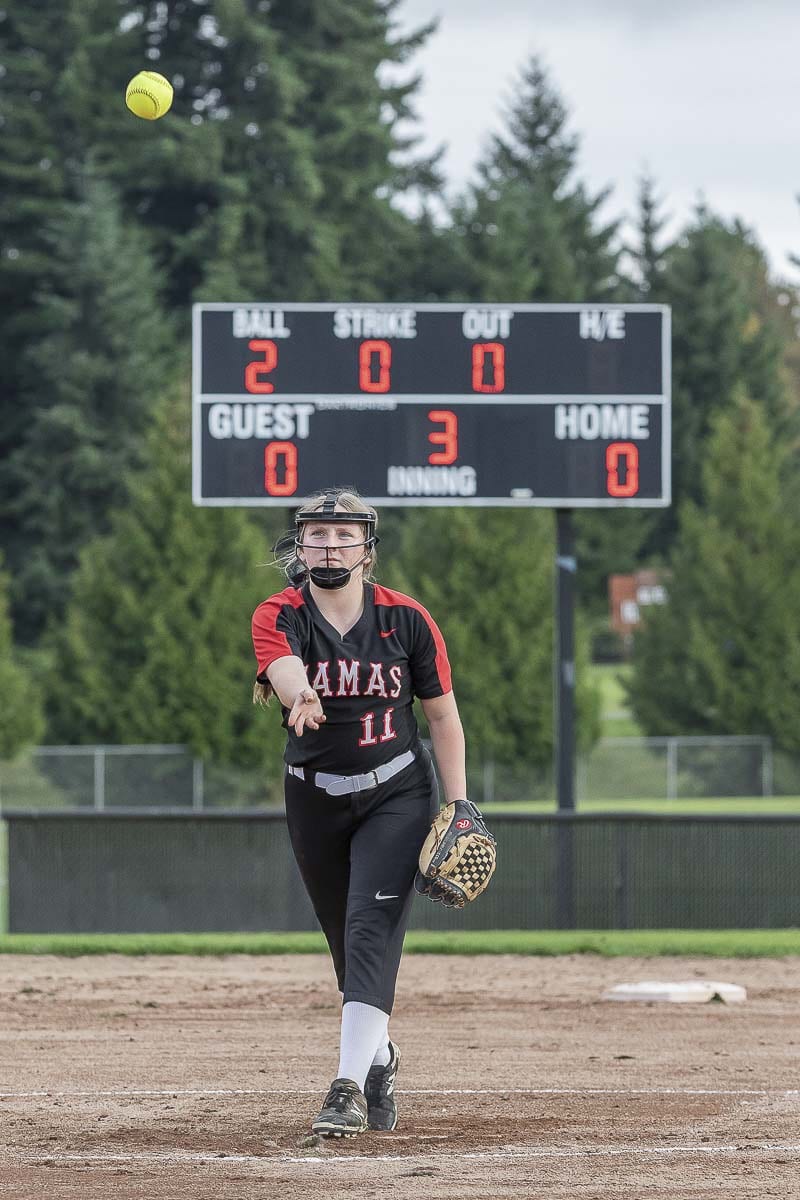
This season, there are 12 schools from the various classifications of the Greater St. Helens League that are fielding slowpitch teams.
Oster and other league administrators are trying to figure out the postseason plan for this fall. They had one, but due to the sport’s rising popularity, more schools across the state fielded teams this season than were anticipated. So instead of having one 16-team, all-classification state tournament, the WIAA is expected to have one eight-team, 4A tournament and one eight-team 3A and below tournament.
Washougal is one of the new slowpitch teams this season.
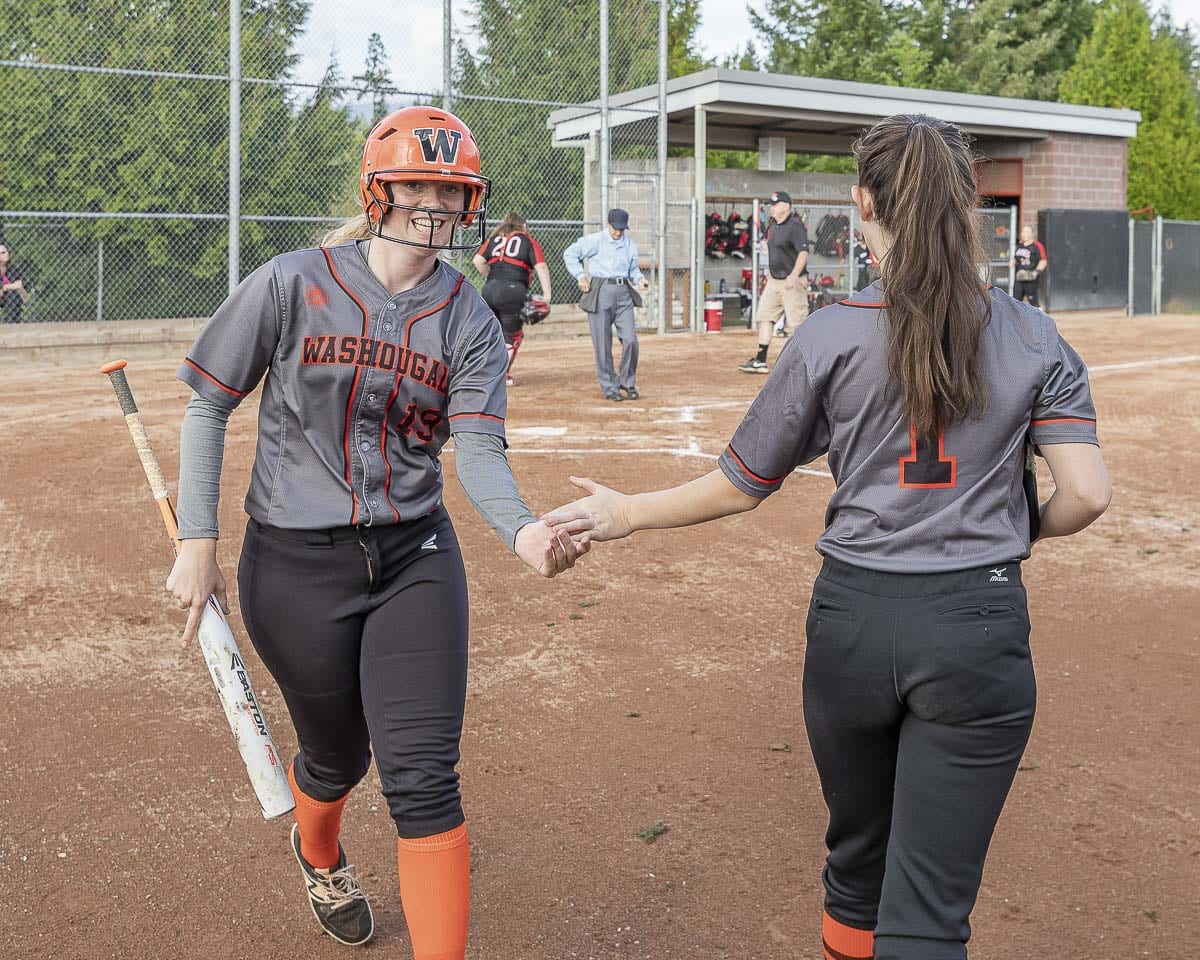
Audrey Thompson and Elaina Tauialo play fastpitch. As soon as the spring season ended last school year, they told the school’s athletic director that they believed they had enough interest to field a slowpitch. The AD asked them to set up a meeting, and 17 athletes showed up, promising to play.
Just like that, the Washougal Panthers joined the slowpitch craze.
And for the first time since 2002, the WIAA has officially joined the craze, too.
“It should have been sanctioned from the beginning,” Franklin said.
It is now, because of athletes such as Franklin, Curley, Thompson, Tauialo, and many, many more throughout the state.




